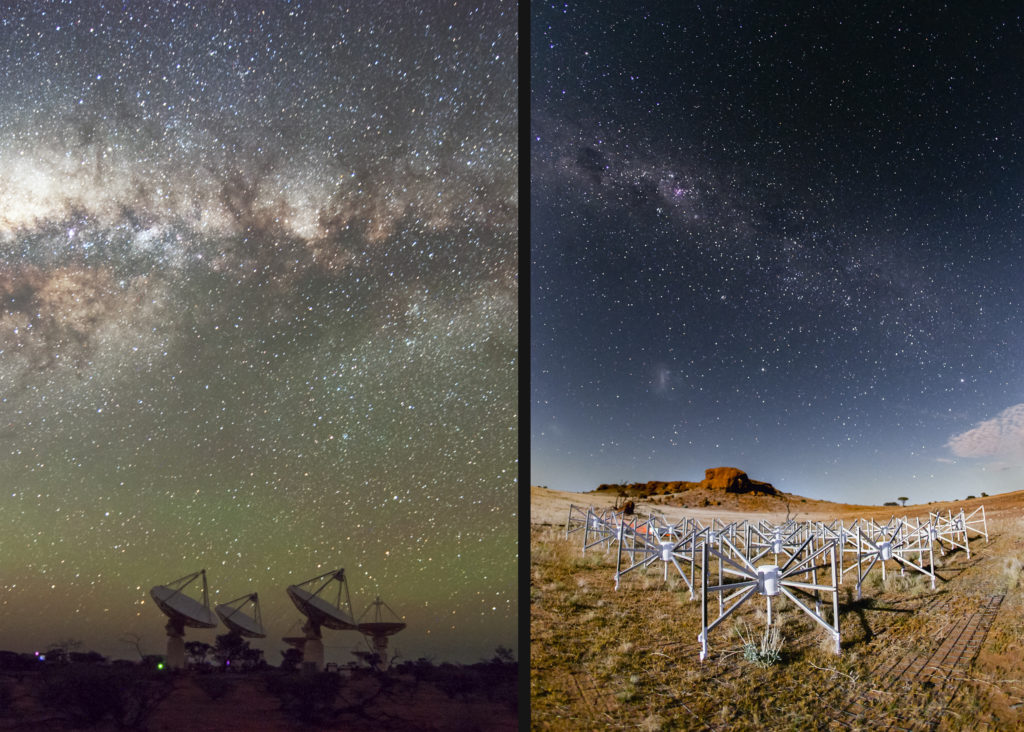From the moment the gravitational wave trigger was detected by LIGO in September 2015, a private alert was sent out to an international network of astronomers. Then, satellites and ground-based telescopes around the world began a hunt for the signal.

Australian radio telescopes involved in the gravitational wave follow-up collaboration are our ASKAP telescope and the MWA, both located at the Murchison Radio-astronomy Observatory. Image credits: ASKAP (Alex Cherney), MWA (Pete Wheeler).
Last month we heard the announcement that gravitational waves had finally been observed – 100 years after their existence was predicted by Einstein.
This was the biggest scientific announcement since the discovery of the Higgs Boson, and for good reason; it impacts the way we understand how the Universe works.
But what actually happened when the signal was first detected? It’s a little like this scene in Contact, but maybe a little less dramatic.
From the moment the gravitational wave trigger was detected by LIGO in September 2015, a private alert was sent out to an international network of astronomers. Then, satellites and ground-based telescopes around the world began a hunt for the signal. Out of the 25 teams that responded to the call, we’re proud to say our ASKAP telescope was one of the instruments involved.
To the follow-up teams, LIGO provides two pieces of information: when the trigger happened and where in the sky to look. But, the target area of sky is large and can take time to map.
Unless you have a wide field of view that is, like that of a radio telescope, which allows large areas the sky to be scanned quickly. Two of the four radio telescopes involved in the follow-up observations are both located at our new observatory in the middle of outback Western Australia – our ASKAP telescope and the Murchison Widefield Array (MWA).
The MWA was the first radio telescope to respond, and ASKAP swung into action soon after. Both telescopes have cooperative agreements with the LIGO/Virgo collaboration but due to the secrecy of the project, most of the time the teams involved don’t know who else is hunting for the signal.
“It’s been fantastic to follow-up this momentous event with the MWA,” said MWA Director Dr Randall Wayth (Curtin University, ICRAR), “But the hardest part has been keeping this quiet for the last few months!”
As it turns out, while the merger of two black holes that created the wave is less likely to create a detectable electromagnetic signal, this did not deter some 1500 researchers involved in the follow-up.
“We’re yet to detect anything, but just to be involved is a great thrill,” said Keith Bannister, one of the ASKAP astronomers involved in the project, “With ASKAP’s capabilities and the right infrastructure in place, we will now be able to do a follow-up observation when LIGO detects a trigger. It’s exciting to think about how and what we’ll be able to contribute in the future.”
To find out more about the ASKAP telescope, you might like to check out ASKAP and the Square Kilometre Array and LIGO makes waves, Australian telescopes follow up.

